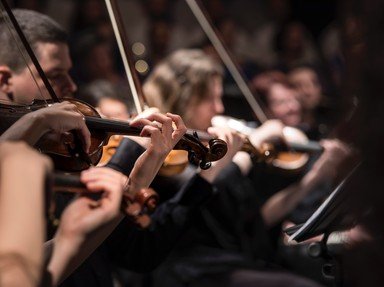Quiz Answer Key and Fun Facts
1. In Verdi's eponymous opera, how does Aida die?
2. A Czech composer was appointed director of the National Conservatory of Music in New York in 1892. Here he created his symphony "From the New World". Who was this composer?
3. Edvard Grieg wrote the music to a popular theatre play by Henrik Ibsen. One of the fragments is "In the Hall of the Mountain King". What is the title of the theatre play?
4. Which dance was made infamous by Jacques Offenbach?
5. Who dedicated in 1939 a guitar concerto to the Spanish city Aranjuez?
6. Aaron Copland named a ballet after a mountain range. What is the title of this ballet?
7. A fantasy for orchestra by Modest Mussorgsky (revised by Nikolai Rimski-Korsakov) is titled "Night at the Bare Mountain". According to Mussorgsky, what happens on this mountain top on St John's Eve (June 23rd)?
8. Which of the following wrote in 1995 the music for the opera "The Murders at the Rue Morgue"?
9. André Campra created an opera-ballet with four movements, set in France, Spain, Italy and Turkey. What is the title of this opera-ballet?
10. Now the time has come to raise your voice and sing with me on the tones of Sir Edward Elgar's "Pomp and Circumstance March Number One". What is the first verse of this hymn heard at every "Last Night of the Proms"?
Source: Author
JanIQ
This quiz was reviewed by FunTrivia editor
ralzzz before going online.
Any errors found in FunTrivia content are routinely corrected through our feedback system.
